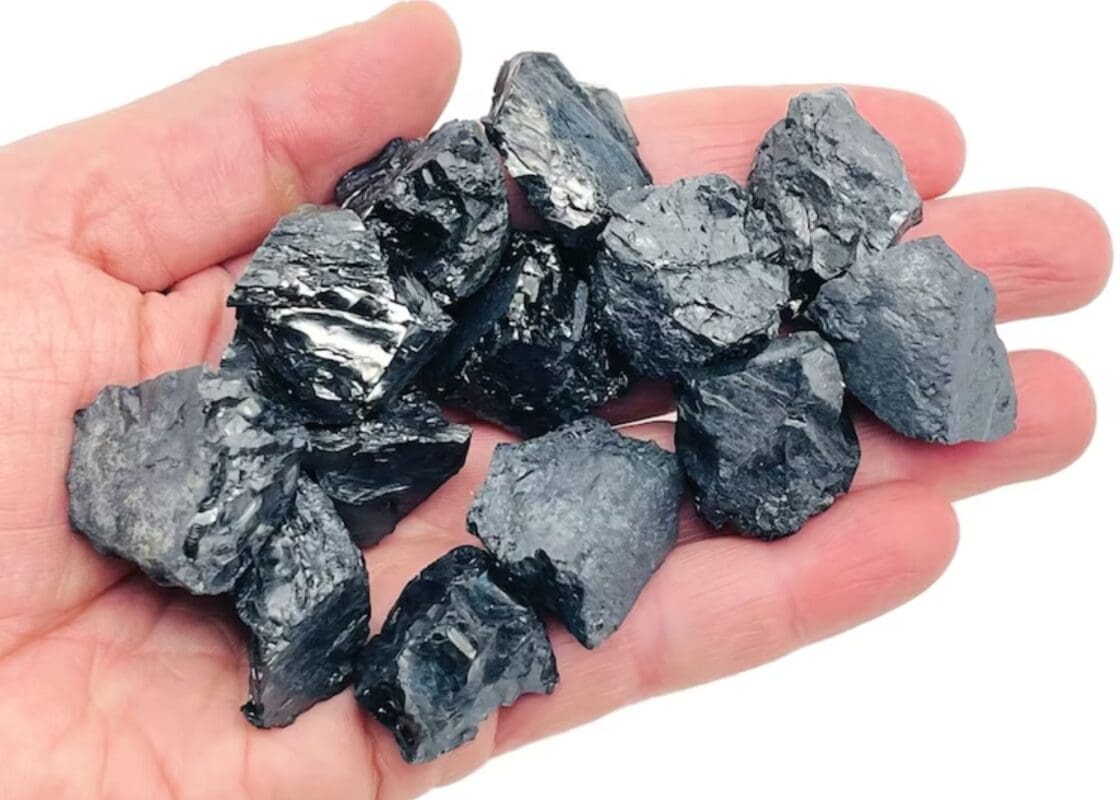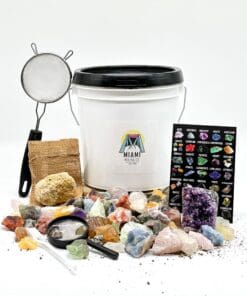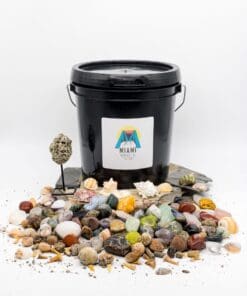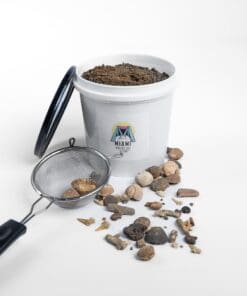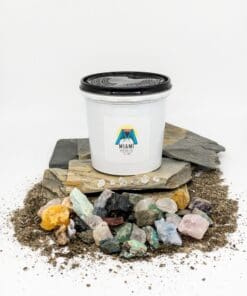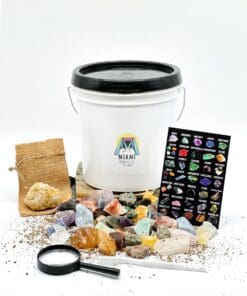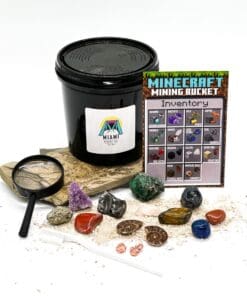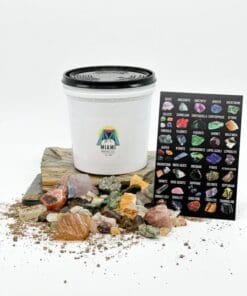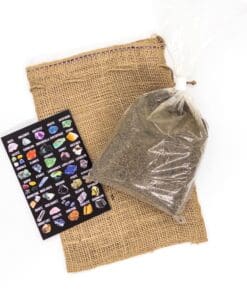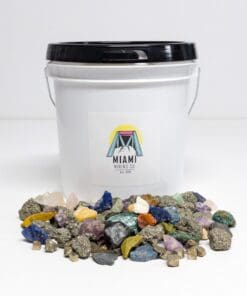Rhode Island Gem Chronicles: The Ultimate Mining Exploration Guide
Rhode Island, the smallest state in the union, may not first come to mind when one thinks of gem mining. Yet, it boasts a surprising richness of minerals and gemstones waiting to be discovered. This article delves deep into the gem-filled crevices of Rhode Island, unveiling its hidden treasures and the best spots to find them.
The Most Popular Gemstones in Rhode Island
While Rhode Island may not have the expansive gemstone reserves of other states, it has its fair share of unique and beautiful stones. Below are tables listing both rare and common gems found in the state, with brief descriptions.
Rare Gemstones Found in Rhode Island:
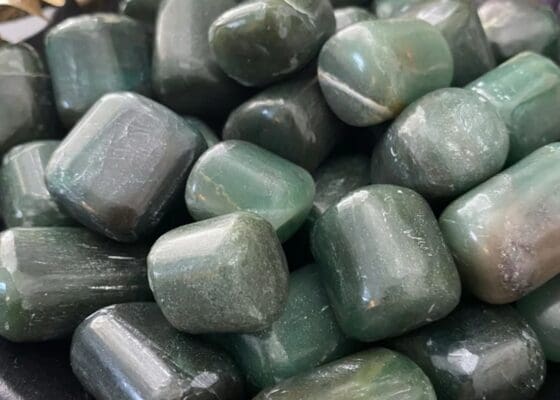
| Gemstone | Description |
|---|---|
| Bowenite | A soft, greenish-blue variety of serpentine often mistaken for jade. Considered Rhode Island’s state mineral. |
| Epidote | A green, crystalline stone often associated with metamorphic rocks. |
| Graphite | Though more a mineral than a gemstone, it’s shiny, metallic gray appearance is often sought after by collectors. |
| Staurolite | Often referred to as “fairy stones” due to its twinned crystal habit that appears cross-like. |
| Sillimanite | A brown, green, or blue fibrous stone, often found in metamorphic rocks. |
Common Gemstones Found in Rhode Island:

| Gemstone | Description |
|---|---|
| Clear Quartz | Transparent and versatile, it’s one of the most abundant minerals on Earth. |
| Smoky Quartz | A brown to black variety of quartz, caused by natural radiation. |
| Almandine Garnet | A reddish-brown stone, it’s the most widespread garnet species. |
| Muscovite Mica | A silvery mineral that splits into very thin sheets. |
| Biotite Mica | A dark, iron-rich variety of mica. |
| Feldspar | This group of minerals includes both orthoclase (pink) and plagioclase (shades of gray to white). |
| Amphibole | A group of dark minerals, often black, green, or brown. |
| Pyroxene | Another group of dark minerals, commonly found in igneous and metamorphic rocks. |
| Chlorite | A green mineral typically found in flakes or sheets. |
| Hematite | This iron oxide is known for its shiny, metallic luster and reddish-brown streak. |
Rhode Island’s landscape, while not brimming with commercial gem mines, offers the discerning collector a chance to uncover some of these natural beauties. Whether you’re a seasoned prospector or just someone intrigued by the treasures beneath our feet, the state holds secrets waiting to be discovered.
Top Gem Mining Locations in Rhode Island

- Cumberland Mines: Situated in Cumberland, these mines are particularly known for quartz varieties. Operating hours tend to be from sunrise to sunset with a nominal entry fee. Always check for seasonal changes.
- Hopkinton Gem Pits: Located in Hopkinton, this is where many almandine garnets have been discovered. It operates from 8 am to 5 pm during the spring and summer months. There is a small fee for adults, with discounts for children and seniors.
- Narragansett Bay Shores: This site isn’t a mine but is well known for beachcombers finding smoothed pieces of quartz and other minerals washed ashore. Accessible year-round, but best visited during low tide. No fees required.
- Providence Quarries: While mostly sought for fossils, some mineral collectors have found specimens of interest here. Operating hours are generally from 9 am to 6 pm. There is a nominal fee for collecting.
- Warwick Gem Beds: Located near Warwick, this site is known for micro-minerals, ideal for those with a keen eye and a microscope. It’s open from 10 am to 4 pm. Entry is free, but donations are accepted.
- Kingston Mines: Situated in Kingston, this location is mainly for rockhounding enthusiasts with a variety of minerals to discover. Operating hours are 9 am to 5 pm, with a small fee charged for entry.
- East Providence Sites: These are smaller, less frequented locations in East Providence, good for beginner gem enthusiasts. They are open from sunrise to sunset and are free to access.
- Bristol Mineral Beds: Located in Bristol, it’s a favorite for those looking for feldspar and mica specimens. Open from 8 am to 4 pm, there’s a minimal fee involved.
- Little Compton Cliffs: These cliffs are more for the adventurous spirit, with the possibility of finding quartz and mica. Accessibility varies with the weather and tide conditions. No entry fees.
- Smithfield Prospect Pits: Located in Smithfield, these pits offer opportunities for both minerals and fossils. They are open from 9 am to 5 pm with a fee for adults. Discounts are available for groups and children.
It’s important to note that while some of these locations have regular operating hours and fees, conditions can change based on the season, ownership, and other factors. Always check ahead, respect the land, and seek permission where necessary.
History of Gem Mining in Rhode Island

Rhode Island, despite its diminutive size, has a rich and layered mining history. While gem mining has never been the main economic driving force in the state, it’s a narrative filled with local legends, passionate hobbyists, and serendipitous discoveries that have deeply impacted the local communities.
The state’s geological underpinning is the primary reason for its mineral wealth. The unique convergence of metamorphic and igneous formations in Rhode Island has given birth to an array of gemstones and minerals over millennia. Granite quarries and coal mines were historically the primary focus of mining activities in the region, with towns like Graniteville in Westerly being named after the robust granite quarrying industry.
However, alongside these commercial ventures, curious residents and geologists began noticing the presence of precious and semi-precious stones. By the late 19th century, hobbyist collectors and mineral enthusiasts started documenting their findings, leading to an increase in interest in Rhode Island’s potential for gem hunting. This newfound interest ignited small gem mining expeditions, predominantly targeting quartz varieties.
Yet, it was the state’s serpentine deposits that eventually garnered national attention. In particular, Bowenite, a variant of serpentine, was named after George T. Bowen, who first identified it in Rhode Island. The beautiful greenish-blue hue of Bowenite, which closely resembles jade, caught the eye of jewelry designers and artisans. Such was its allure that, in 1966, Bowenite was designated as Rhode Island’s state mineral.
Despite this intriguing history, large-scale gem mining operations never truly took off in Rhode Island. The state’s small size, combined with a focus on other industries, kept gem mining in the domain of passionate enthusiasts rather than commercial enterprises. Yet, for those who know where to look, Rhode Island’s ground is a treasure trove of tales, interwoven with sparkling gems waiting to be uncovered. Today, locals and visitors alike continue to scour its terrains, connecting with a past that speaks of nature’s bounty and human curiosity.
Gem Mining Regulations in Rhode Island

Rhode Island, with its intricate coastline and rich history, takes the protection of its natural resources and environment seriously. The pursuit of gemstones, while intriguing, is subject to regulations designed to ensure both the preservation of these treasures and the safety of those seeking them.
First and foremost, any prospective miner or collector should be fully aware that private property rights are sacrosanct in Rhode Island. Trespassing is a legal offense, and it is crucial for anyone interested in gem hunting to seek proper permission from landowners before embarking on any mining activity. This not only ensures a legal and smooth gem hunting experience but also helps maintain good relations between property owners and the gem hunting community.
Moreover, certain areas in Rhode Island, like state parks and protected lands, are off-limits for any mining or rockhounding activity. These regions are protected to preserve the state’s natural beauty, ecosystems, and historical landmarks. Even if gemstones are present, removal from these areas is strictly prohibited.
For areas that do allow gem and mineral collecting, there might not be specific limits on the volume of gemstones that can be taken. However, the state emphasizes the importance of ethical collecting. The “Leave No Trace” principles, which originated in the context of hiking and camping, are equally applicable here. This means taking only what you need, not disrupting natural habitats, and leaving areas as you found them, if not in a better condition.
Furthermore, any commercial endeavors involving the sale or export of significant quantities of gemstones might require additional permits and paperwork. These regulations aim to prevent any large-scale unauthorized or environmentally detrimental extraction operations.
Safety is another paramount concern. Gem hunting, especially in areas like cliffs or quarries, can be hazardous. The state recommends that individuals familiarize themselves with potential risks and always carry proper safety gear. This includes, but is not limited to, safety goggles, gloves, and protective footwear.
Lastly, it’s crucial to stay updated on the regulations. Mining and collecting rules can change based on environmental assessments, land use changes, or other policy decisions. Prospective gem hunters should regularly check with local authorities or related state departments for any updates.
In summary, while the allure of gem hunting in Rhode Island is undeniable, it is essential to approach the activity with respect for the law, the land, and its history. By doing so, gem enthusiasts can ensure a rewarding and responsible experience.
Necessary Tools and Equipment for Gem Mining in Rhode Island
Venturing into Rhode Island’s varied terrains in search of gemstones requires not just enthusiasm but also the right set of tools. Being equipped with the appropriate gear ensures that gem hunters can extract minerals without damaging them, all the while ensuring their safety. Here’s a comprehensive guide tailored to Rhode Island’s geological features:
1. Screening and Classifying Tools: Reveal those hidden treasures!
Description: Especially if you’re near sandy or gravelly areas, sifting screens can help separate smaller gems from surrounding debris.

🛒 Explore Top Screening Sets on Amazon
2. Shovels and Trowels: Digging deep or just scratching the surface?
Description: For digging into softer grounds or moving aside debris, a small shovel or trowel is a practical tool to have.

🛒 Find Quality Shovels and Trowels on Amazon
3. Picks and Hammers: The backbone of any gem hunting endeavor.
Description: These are fundamental to any rockhound’s toolkit. A rock hammer allows for efficient breaking of rocks, while chisels, especially those with a flat end, can help split rocks to reveal what’s inside.

🛒 Check Out Best Picks and Hammers on Amazon
4. Buckets: Your trusted companion for carrying treasures.
Description: A sturdy bucket or a durable bag is essential for storing the gems and rocks you collect. Remember, some rocks may be heavier than they appear, so ensure your carry equipment is robust.

🛒 Shop for Reliable Buckets on Amazon
5. Magnifying Glass: Every detail counts!
Description: Many gems in Rhode Island, like the Bowenite, can be found in smaller sizes. A hand lens helps in closely examining potential finds on the spot.

🛒 Grab Your Magnifying Glass on Amazon
6. Guidebooks and Field Guides: Knowledge at your fingertips.
Description: A regional gem and mineral field guide specific to Rhode Island will be your best companion. It can help you identify your finds and give insights into where particular minerals might be located.

🛒 Discover the Best Field Guides on Amazon
7. Containers and Bags: Organize, store, and flaunt your finds.
Description: As you collect specimens, having durable bags or containers prevents damage to your finds and makes it easier to carry them.

🛒 Shop for Storage Solutions on Amazon
8. First Aid Kit: Better safe than sorry!
Description: Accidents, however minor, can happen. Having a basic first aid kit can help address small cuts, stings, or bruises immediately.

🛒 Secure Your First Aid Kit on Amazon
In essence, while the anticipation of unearthing hidden gems is exhilarating, being adequately prepared is vital. The right tools not only enhance the chances of a successful gem hunting trip but also ensure that the experience is safe and enjoyable. Always remember to pack according to the specific location and conditions you anticipate encountering in Rhode Island.
Tips and Tricks for Successful Gem Mining in Rhode Island

Rhode Island, affectionately known as the Ocean State, might be small in size but it’s vast in its geological wonders. If you’re setting foot in this state with the hopes of unearthing some sparkling treasures, a combination of local knowledge and seasoned advice can truly elevate your gem hunting experience. Here are some tips and tricks tailored for Rhode Island’s gem-filled terrains:
1. Research and Planning: Before heading out, invest time in researching the specific areas you want to visit. Local rockhounding groups, online forums, and library resources can be goldmines of information.
2. Respect Private Property: Always remember to ask for permission if your hunting ground is on private land. It’s not only courteous but also ensures you’re not trespassing.
3. Best Times to Visit: Post rainfall can be an excellent time for gem hunting, especially in riverbeds or shores, as rain can wash out or expose new minerals. However, for cliff or hilly areas, ensure the ground is stable post-rain to avoid any hazards.
4. Documenting Finds: Keeping a detailed notebook with information about where and when you found each gem can be invaluable for future trips and for understanding the geological context of your discoveries.
5. Familiarize with Local Gems: Knowing what gems are commonly found in specific Rhode Island locations can help set realistic expectations and assist in identification.
6. Join a Group: Especially for beginners, joining a local rockhounding or gem hunting group can be beneficial. The collective experience and knowledge can make the hunt more productive and sociable.
7. Stay Alert to Tide Patterns: If you’re searching along Rhode Island’s famed coastlines, always be aware of tide schedules. Some areas may only be accessible during low tide.
8. Dress Appropriately: Weather in Rhode Island can be unpredictable. Dressing in layers, wearing sturdy footwear, and carrying waterproof gear can ensure you’re prepared for all eventualities.
9. Environment First: It’s crucial to remember that while hunting, the environment’s wellbeing takes precedence. Avoid over-extracting or causing undue harm to natural habitats.
10. Patience is Key: Gem hunting is as much about the journey as the end finds. Some days might be incredibly rewarding, while others might not yield much. The key is to enjoy the experience and the connection with nature.
In conclusion, Rhode Island, with its varied geology and maritime allure, offers a unique gem hunting experience. Approaching the adventure with respect, preparation, and patience ensures not only a fruitful haul but also lasting memories.
Handling Your Gemstone Finds
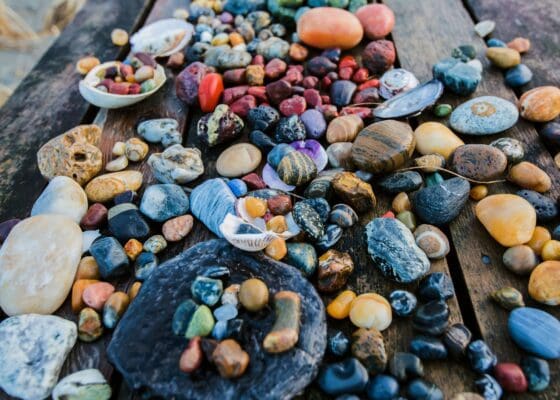
Once you’ve successfully mined gemstones in Rhode Island, the next crucial step is to properly care for and showcase these natural treasures. Handling, cleaning, and storing your finds is an art in itself, and with the right approach, you can ensure your gemstones maintain their lustre for years to come. Here are some guidelines tailored to the gems often found in Rhode Island:
1. Gentle Cleaning: Start with a soft brush and water. Many gems can be easily scratched or damaged, so gentle cleaning is essential. For more stubborn dirt, a mild dishwashing soap can be used. However, always research the specific gemstone before exposing it to any cleaning solution.
2. Avoid Harsh Chemicals: Some gemstones can react adversely to strong chemicals or even natural substances like lemon juice. Always ensure the cleaning agent is compatible with the gem type.
3. Proper Storage: Store each gemstone separately to prevent them from scratching each other. Soft, padded jewelry boxes or individual cloth pouches are ideal. For raw or uncut stones, plastic containers with separate compartments can be used.
4. Documentation: Alongside the gem, keep a note of where and when you found it. This not only adds to its story but can also be useful for valuation or scientific purposes.
5. Displaying Your Finds: If you wish to showcase your gemstones, consider investing in display cases with a soft interior. Displaying them in well-lit areas, away from direct sunlight, will highlight their natural beauty.
6. Consult an Expert: If you believe you’ve found something truly unique or valuable, consider consulting a gemologist or a seasoned rockhound. They can offer insights into the gem’s quality, potential value, and any specific care instructions.
7. Handle with Care: Some gemstones, especially in their raw form, might have sharp edges. Always handle with care to avoid any injuries.
8. Consider Lapidary Arts: If you’re interested in further enhancing the beauty of your finds, you could explore lapidary arts. Cutting and polishing gemstones can bring out their inner brilliance, turning them into jewelry or display pieces.
9. Stay Updated: Over time, gem care methodologies evolve. Stay updated with new cleaning solutions or storage methods that might emerge in the gem community.
10. Share and Learn: Sharing your experiences and finds with local gem communities or online forums can be fulfilling. It not only allows you to learn from others but also adds to the collective knowledge pool.
In essence, each gemstone you unearth in Rhode Island is a piece of the state’s geological history. Treating these gems with respect and care ensures that their natural splendor is preserved for generations to enjoy.
Famous Gemstone Finds in Rhode Island

Rhode Island, while the smallest state in the U.S., is a land filled with tales of remarkable discoveries. Its gemstone history might not be as extensive as some Western states, but it certainly has had its share of dazzling finds that have added sparkle to the state’s geological lore. Delve into some of the most famous gemstone discoveries that Rhode Island has seen:
1. The Bowenite Beauty: In the late 19th century, Bowenite, a rare form of Serpentine and often referred to as ‘New Jade’, was found in Rhode Island. It quickly gained recognition for its apple-green shade and was especially sought after by jewelry makers of the era.
2. Cumberlandite, State Rock: While not a gemstone, the discovery of Cumberlandite is significant. This black or brown rock with white markings, found predominantly in Blackstone Valley, became Rhode Island’s official state rock. Its rarity, being found only in specific areas of the state, makes it quite a treasure.
3. Coastal Quartz Finds: Over the years, beachcombers have reported finding beautiful quartz specimens along Rhode Island’s coastline. Some of these, polished by the ceaseless action of waves, have the sheen and beauty of gem-quality stones.
4. Garnet Gulch Tales: Although not as frequent, there have been reports from local rockhounds about discovering garnets in certain pockets of Rhode Island. These discoveries, while sporadic, have added to the state’s gem hunting allure.
5. Tourmaline Treasures: In the early 20th century, there were accounts of green tourmaline finds within the state. While not as abundant as in neighboring states, these discoveries made headlines in local geology circles.
6. Historical Heirlooms: Many old Rhode Island families have tales of ancestors finding gemstones, which have now become family heirlooms. While the exact origins of these stones might be lost in history, their presence adds to the state’s rich tapestry of gemstone stories.
7. Fossilized Wonders: Although not gemstones in the traditional sense, fossilized remnants of ancient creatures have been discovered, especially around coastal regions. These organic gems offer a unique glimpse into the state’s prehistoric past.
Rhode Island might not boast vast mines or sprawling gem fields, but its quiet stories of remarkable finds showcase its unique geological character. Each discovery, whether by a casual beachcomber or a dedicated rockhound, adds a new chapter to Rhode Island’s gemstone legacy. The allure lies not just in the hunt but in the myriad stories that these stones silently carry with them.
Additional Gem Mining Opportunities
While Rhode Island offers a unique charm in gem hunting, its neighboring states also beckon with their rich geology and distinctive gemstone finds. Broadening your gem-hunting horizon can provide a more varied and enriching experience. Here are neighboring states that you can consider exploring:
1. Connecticut Gem Mining: Known for its garnets and beryl, Connecticut has many old mines and quarries which promise an adventurous hunt. The state also boasts of glistening tourmaline and aquamarine finds.
2. Massachusetts Gem Mining: A state with a rich geological history, Massachusetts offers opportunities to find gems like beryl and garnet. The western parts of the state are particularly known for unique mineral specimens.
3. New York Gem Mining: Beyond its urban allure, New York has numerous locales brimming with quartz, garnet, and tourmaline. The Adirondack Mountains are a particular hotspot for seasoned rockhounds.
4. New Jersey Gem Mining: While a bit further, it’s worth noting that New Jersey offers fantastic sites for zeolite minerals and prehnite.
Diversifying your gem-hunting trips by venturing into neighboring states can bring forth new challenges and discoveries. Each state offers a unique geological narrative and an array of gemstones, waiting to be unearthed by those with a keen eye and persistent spirit.
Learn the secrets of successful gem mining with our comprehensive Gem Mining Near Me guide.
The Enchantment of Gem Hunting and the Magic of Home Mining
The allure of gem hunting in Rhode Island lies not just in the thrill of discovery but also in the deep connection one forms with the land’s geological past. Each expedition into the Ocean State’s varied terrains – be it the coastlines, valleys, or wooded expanses – brings with it a promise of unearthing a fragment of the Earth’s hidden treasures. Beyond the tangible gems, the experience of being immersed in nature and the tales each stone silently narrates add to the state’s charm.
However, for those who can’t always venture outdoors or are seeking a gem experience from the comfort of their homes, there’s an enchanting alternative: the Gem Mining Kit. This kit allows enthusiasts to sift through rich soil, unearthing a variety of gemstones, making every moment a surprise discovery. It’s a beautiful way to capture the essence of the field experience, making gem hunting accessible and delightful for all ages and settings.

